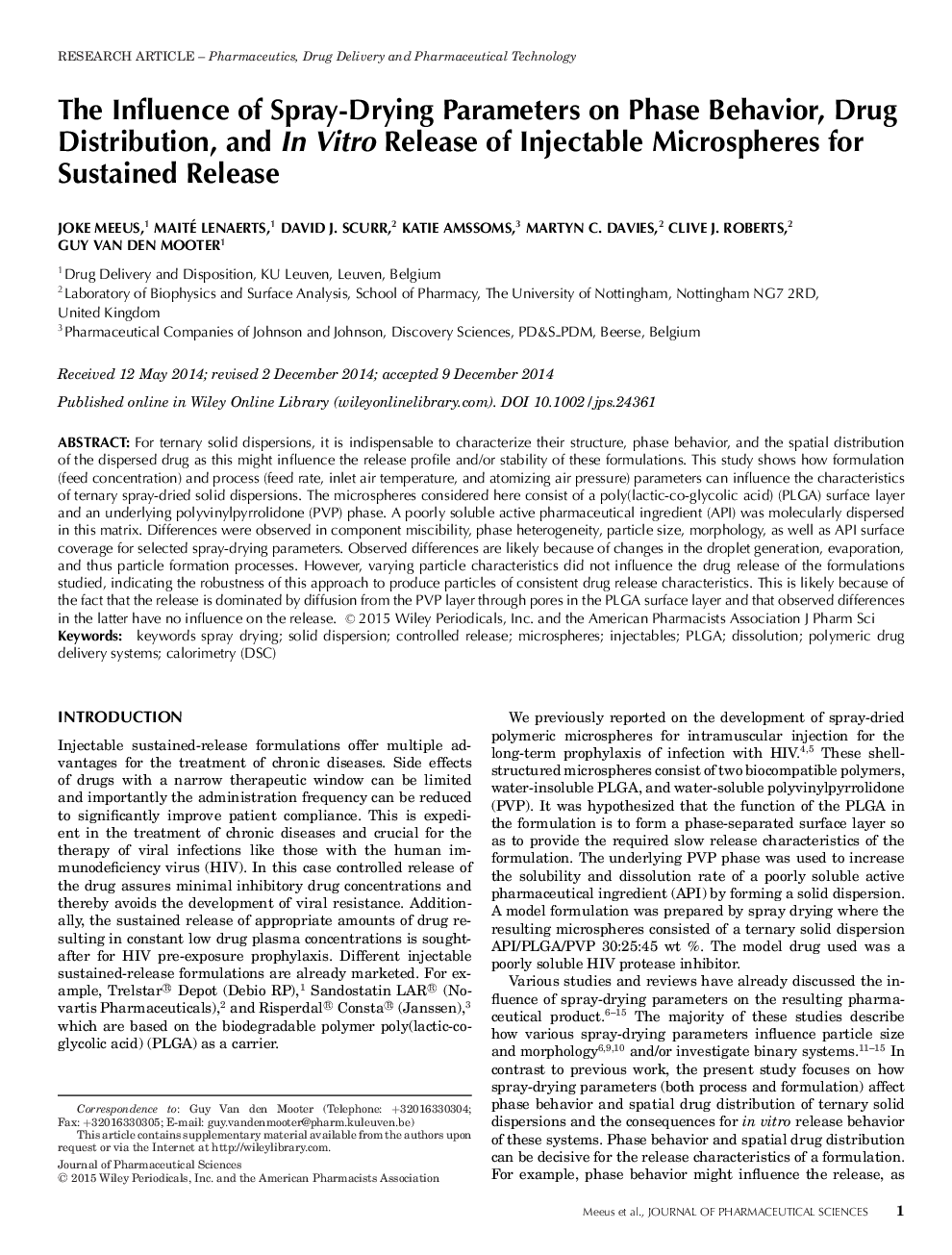| Article ID | Journal | Published Year | Pages | File Type |
|---|---|---|---|---|
| 10162136 | Journal of Pharmaceutical Sciences | 2015 | 10 Pages |
Abstract
For ternary solid dispersions, it is indispensable to characterize their structure, phase behavior, and the spatial distribution of the dispersed drug as this might influence the release profile and/or stability of these formulations. This study shows how formulation (feed concentration) and process (feed rate, inlet air temperature, and atomizing air pressure) parameters can influence the characteristics of ternary spray-dried solid dispersions. The microspheres considered here consist of a poly(lactic-co-glycolic acid) (PLGA) surface layer and an underlying polyvinylpyrrolidone (PVP) phase. A poorly soluble active pharmaceutical ingredient (API) was molecularly dispersed in this matrix. Differences were observed in component miscibility, phase heterogeneity, particle size, morphology, as well as API surface coverage for selected spray-drying parameters. Observed differences are likely because of changes in the droplet generation, evaporation, and thus particle formation processes. However, varying particle characteristics did not influence the drug release of the formulations studied, indicating the robustness of this approach to produce particles of consistent drug release characteristics. This is likely because of the fact that the release is dominated by diffusion from the PVP layer through pores in the PLGA surface layer and that observed differences in the latter have no influence on the release.
Keywords
Related Topics
Health Sciences
Pharmacology, Toxicology and Pharmaceutical Science
Drug Discovery
Authors
Joke Meeus, Maité Lenaerts, David J. Scurr, Katie Amssoms, Martyn C. Davies, Clive J. Roberts, Guy Van den mooter,
